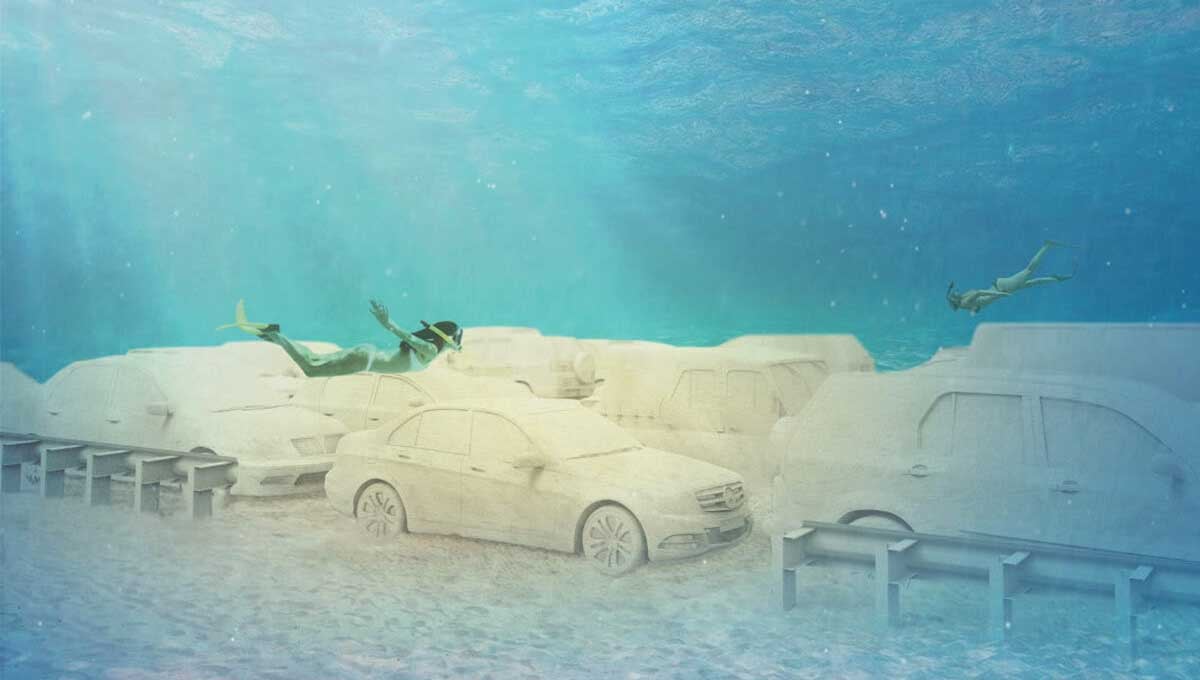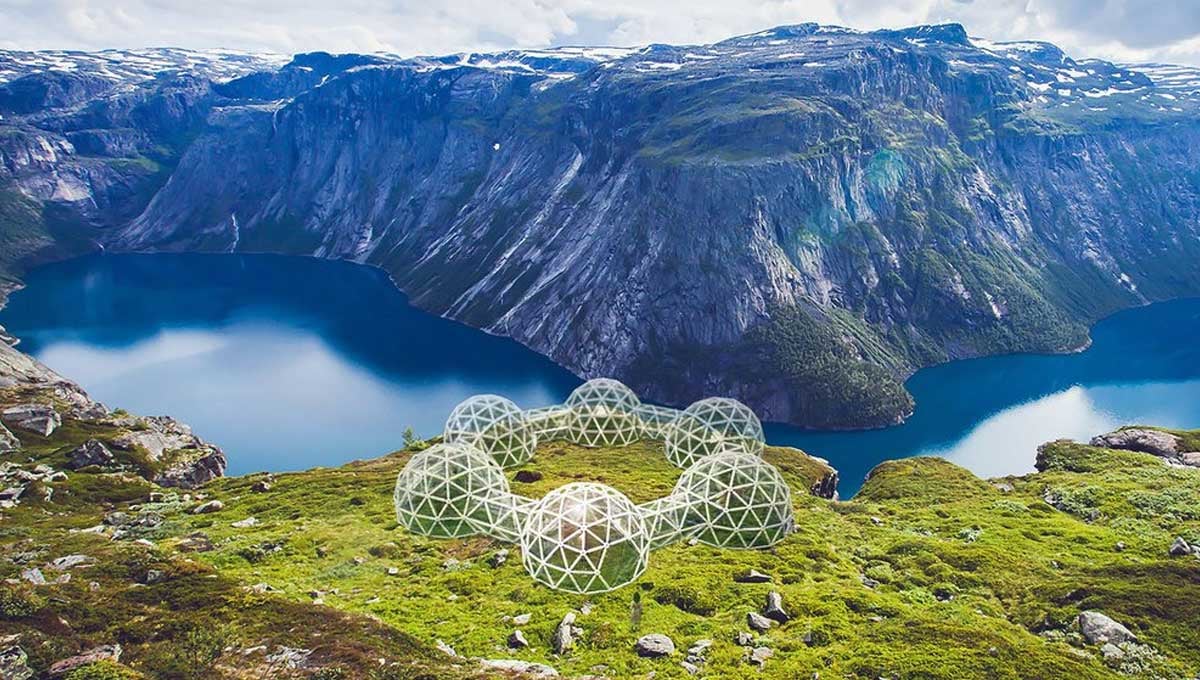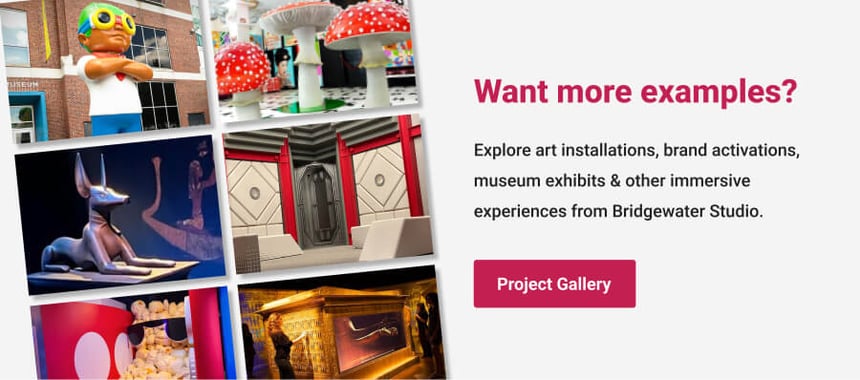Installation art pushes boundaries and challenges us to think. These conceptual art works aim to change viewers’ perceptions and intensify their reactions to the physical space the art occupies. Usually large-scale, some installation pieces draw the viewer into the created environment. Other pieces ask the viewer to consume the experience from a distance. Artists may use lights and sound, invite visitors to touch and interact with the installation, and even incorporate olfactory elements to develop a fully immersive experience.
In this article, we’ll identify the defining attributes of installation art and explore five examples of art installations that engage the senses in unique and compelling ways.

What is installation art and how does it differ from other types of art exhibitions?
Also known as environmental art, installation art is art that occupies a three-dimensional space and incorporates the characteristics of that space into its design. This spatial element is the reason this type of art is called “installation art.”
Installation art is site-dependent. The artist uses a pre-determined space to create an environment that will communicate an idea, feeling, or story. How and where the elements of the work are installed within or around that site conveys the artist’s vision to viewers. Other art exhibitions may be planned with a particular space in mind, too. After all, museum and gallery curators consider location when choosing where to place the art in their care. However, for installation art, the setting is part of the show.
Installation art is sometimes compared to performance art, and sometimes installation art is performance art. What distinguishes the two is that performance art by necessity requires a performer, usually the artist or a proxy. Audience members may become participants in an installation art exhibition but there is no pre-planned performance component.
Within the installation art genre, artists can express themselves using a range of styles and methods. Installations of this type may incorporate technically complex digital displays, lighting, and sound systems that completely transform a space. Or, they may take a minimalist approach, focusing the viewer’s attention on the space itself. Installation art may also incorporate large sculptures and 3D objects that shape the physical space or direct the viewer’s path.
Often the art’s creator will partner with experts in multiple fields such as audio-visual electronics or sculptural fabrication to assemble their works.
Because of the range of options available to creators, the attributes of a specific installation artwork will be unique. However, most installation art will have some of the following characteristics...
Typical installation art characteristics
- A constructed environment that is site-specific and site-transformative.
- The purposeful placement of three dimensional-objects to create a unified experience.
- Large-scale designs which may be placed indoors or outside.
- Must be experienced in-person to fully understand and appreciate.
- May be temporary or permanently placed at a site.
- Usually employs mixed media and multi-sensory elements such as sound and light to facilitate viewers’ immersion.
- Is not intended for passive consumption but aims to activate spectators and elicit strong responses.
Now, as promised, here are 5 examples of installation art designed to engage the senses.
Five examples of sensational, multi-sensory art installations
1. Using touch to tell the story of watchmaking: The Musée Atelier Audemars Piguet
Extending from the historical site where watchmakers Jules Louis Audemars and Edward Auguste Piguet had their workshop, a winding structure, enclosed in glass, presents visitors with a three-dimensional tribute to the history of watchmaking.
Evoking the idea of a watch’s spring, “visitors experience the route as a flowing continuum,” reports ArchDaily in Musée Atelier Audemars Piguet / BIG + ATELIER BRÜCKNER + CCHE. In addition to several complex mechanical sculptures, the installation features workbenches where visitors can practice their own watchmaking.
2. Taking immersion to new depths to raise awareness: The ReefLine
This underwater sculpture park and artificial reef currently underway will extend for 7 miles along the coast of Miami Beach, Florida, once complete. This public art installation will feature the works of multiple artists that will be visible only by visitors who immerse themselves in the ocean to experience this first-of-its-kind artistic waterway.
3. The effects of pollution through simulated scents: Pollution Pods
To raise awareness about the declining air quality of cities around the globe, artist Michael Pinsky collaborated with Climart to construct six geodesic domes, each one simulating the smell of a different city’s air. Following a progressive path, participants are exposed to the scent of cities with increasingly worse air quality. Unlike the cities they represent, the smells visitors will experience aren’t caused by pollution but a mix of carefully curated fragrances.
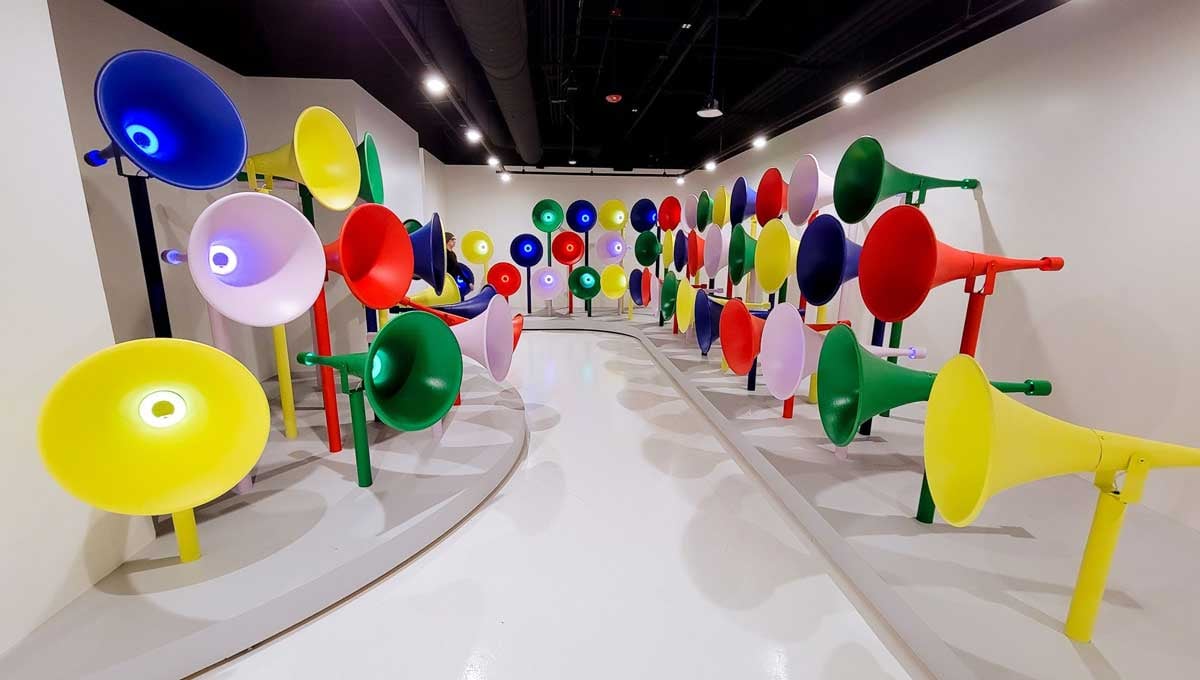
4. Exploring the sensation of sound: Bright Noise
This installation by Yuri Suzuki at the Color Factory in Chicago immerses visitors in a tunnel of color and sound. Colorful horns respond to people’s movements by singing. The exhibit encourages social engagement among guests as the number of horns playing increases as more visitors enter the space. With ever-changing conditions, no two sensory experiences are the same.
5. Technology-enhanced environments: Moment of Reflection
Combining data technology with large-scale physical displays, digital artist Refik Anadol builds immersive digital sculptures and environments that envelop visitors in the sights and sounds of data.
In one of his most recent installations, Anadol and his team at Refik Anadol Studio used a machine learning algorithm to process more than 300 million photographs, visually displaying the results through an 18-foot sculpture. Anadol tells UCLA’s Jessica Wolf that this installation was created to inspire viewers to reflect upon the tumultuous pandemic years and feel a sense of calm and hope.
Bringing your installation art to life
Creating an interactive, multi-sensory art installation doesn't just begin with a great concept. It starts with the right partner. Once inspiration strikes, a full-service art installation design and fabrication company can provide you with a plan to budget accurately and streamline the entire project process.
Involving your design and fabrication partner as early as possible will help you take full advantage of their expertise—from identifying the best materials to the right fabrication methods, and countless other details.
Have an idea for installation art? Take the first step by scheduling a free strategy session with Bridgewater Studio today. Let's talk about your creative vision and the best way to make it a reality.
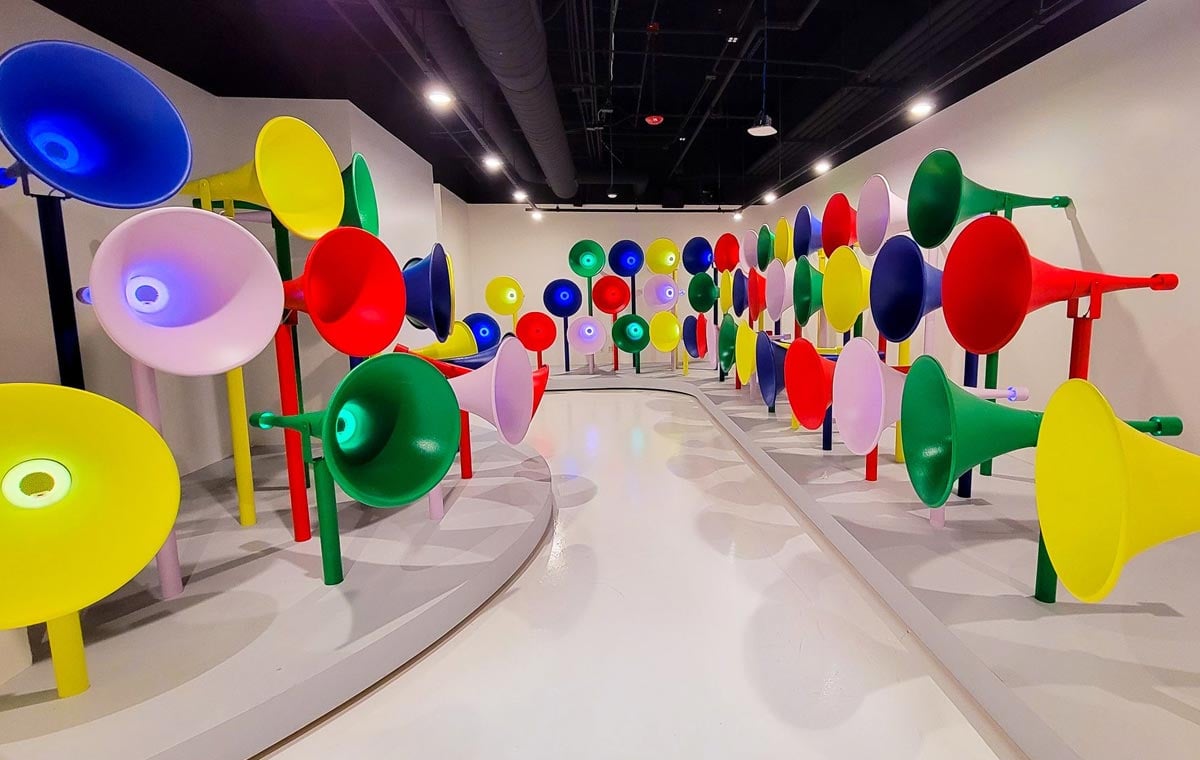

.png)
.png)
.png)
